Glean
An overview of the Glean extension with Secoda
What you'll need
From Glean, you'll need two pieces of information:
Your Glean instance name
Your Glean indexing token
Creating an indexing token
If you have a token already, this can be skipped.
Glean provides step by step instructions on how to create a token; however, please ensure that secoda is input into the Scopes field as a datasource. The rest of the config is discretional.
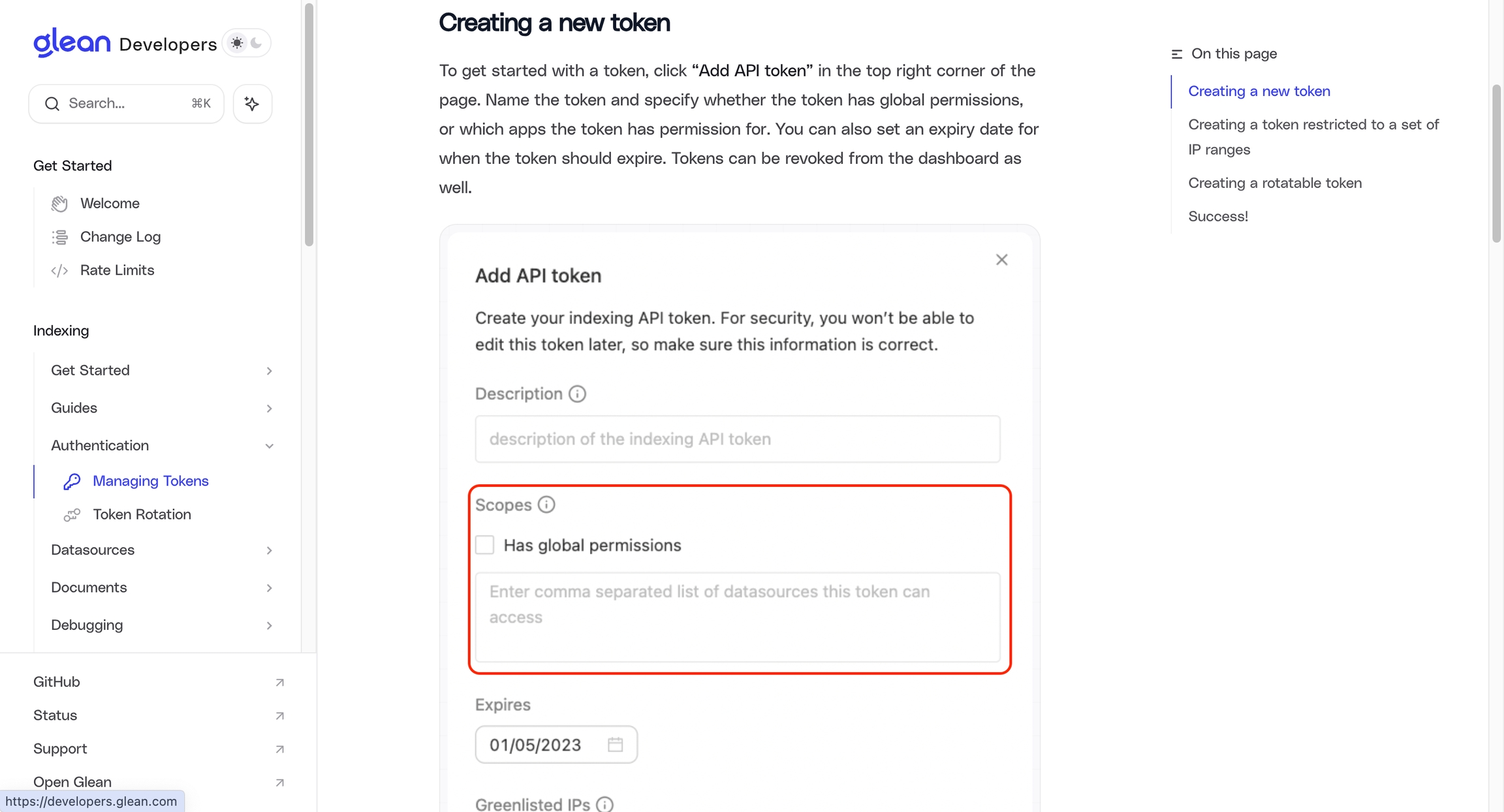
Connecting Glean to Secoda
On the extension connection page, fill out the Instance field with your Glean's instance name, and the API token field with your Glean API token.
Click Submit afterwards.
Since this extension only pushes from Secoda, the Import and Sync pages which come after can be disregarded.
By default, all entities with these entity types have their metadata pushed to Glean:
Documents
Questions
Glossary terms
Columns
Tables
Schemas
Databases
Charts
Dashboards
However, it's possible to include or exclude which entities get pushed using filter rules. For example, here's a simple include rule that ensures only documents get pushed to Glean:
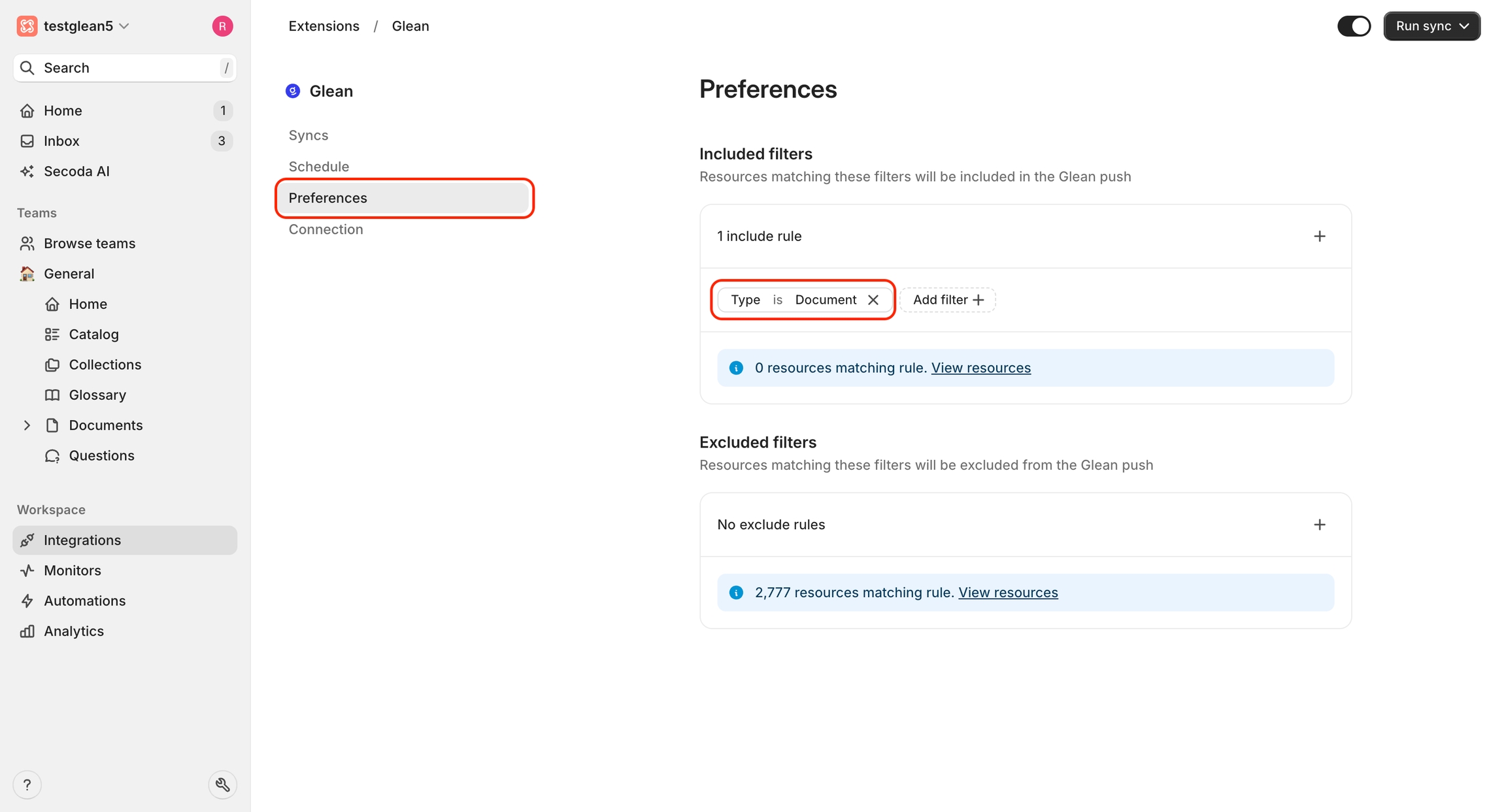
Pushes to Glean can also be run on a schedule automatically by providing a cron expression in the Schedule tab:
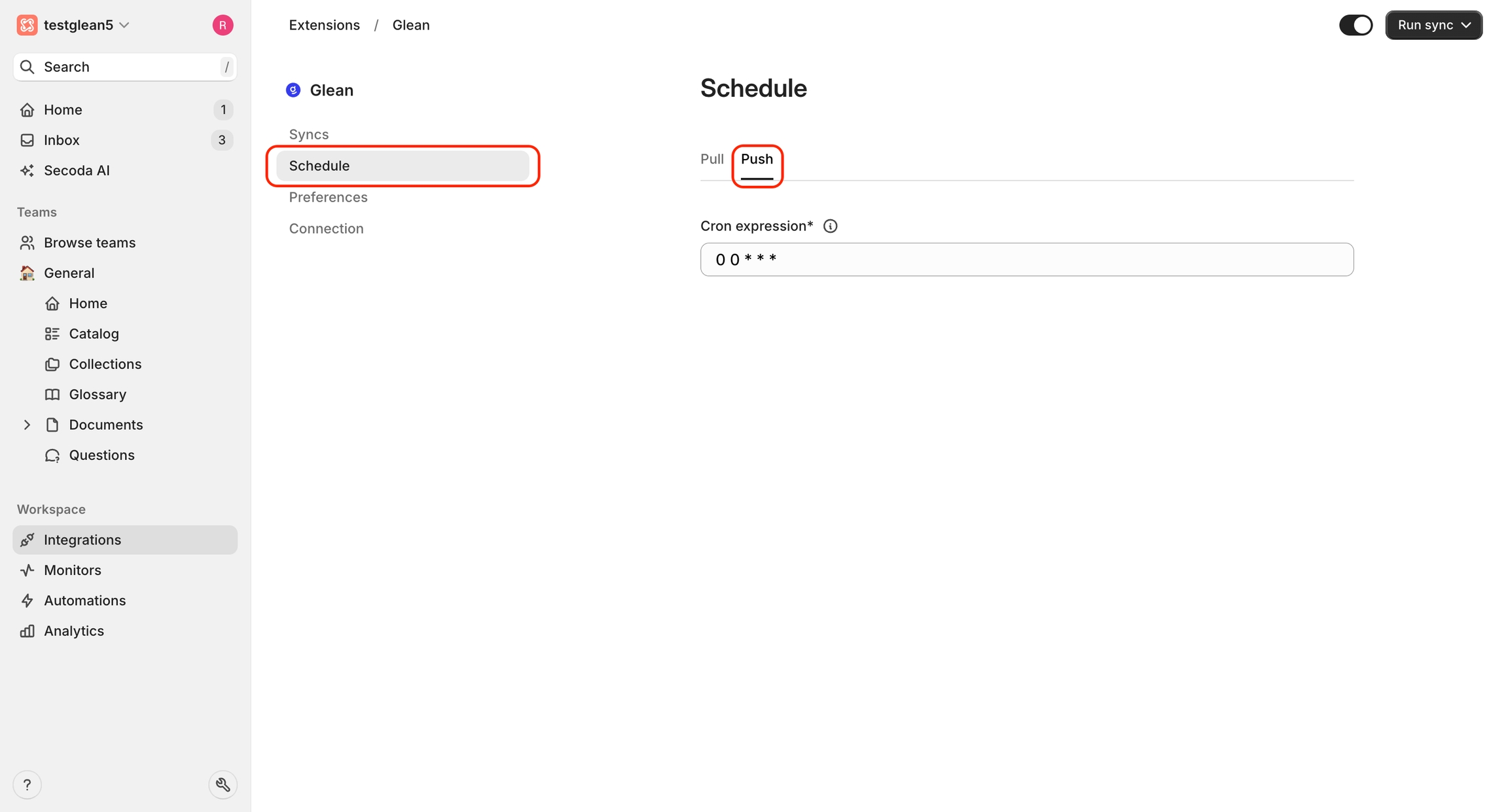
For a manual refresh of Glean's index, click on Run sync and then Push metadata at the top right:
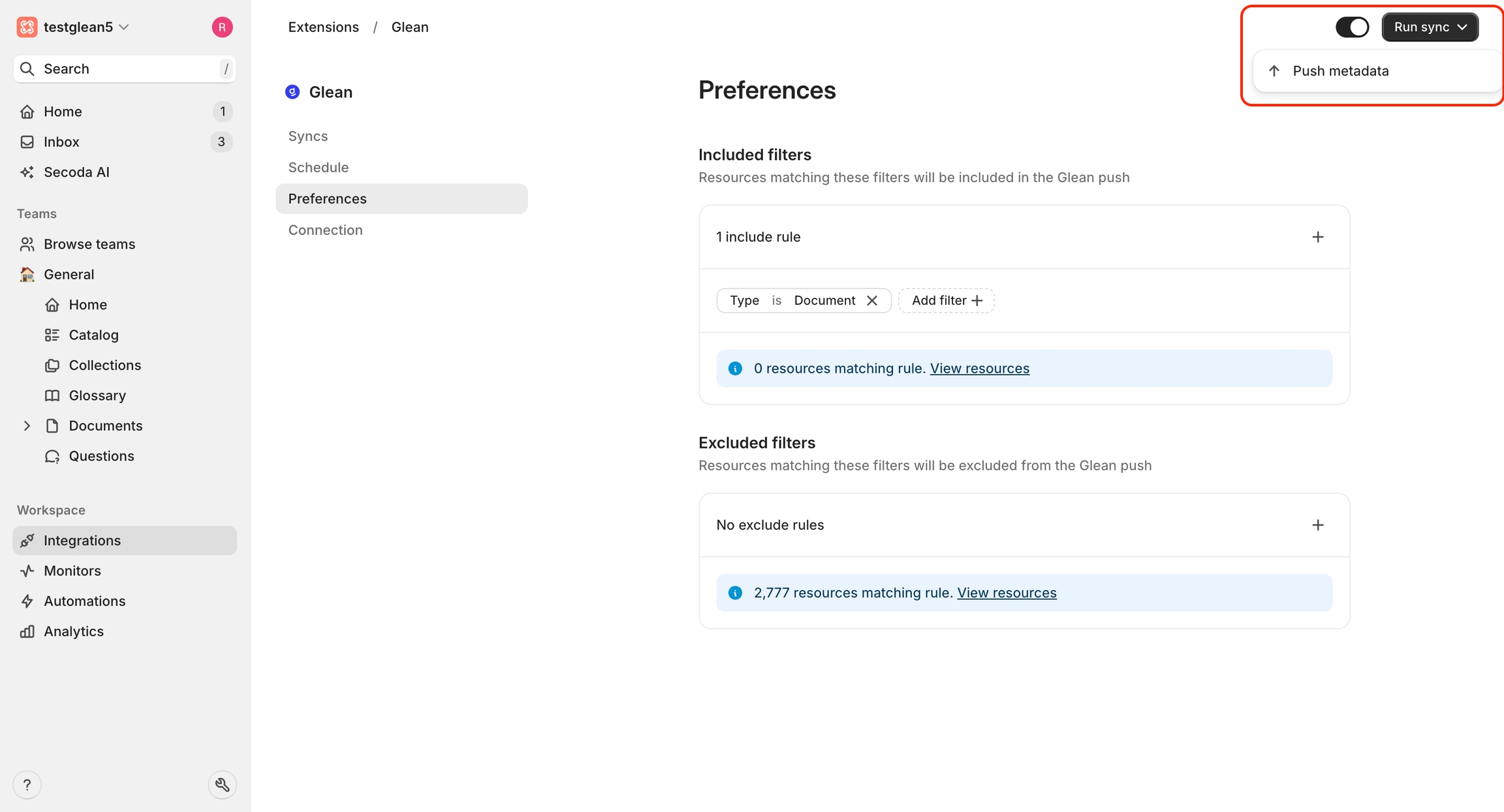
After Secoda resources are indexed in Glean, the metadata and resource itself will begin appearing in search results. The results are hyperlinked to the resource in Secoda.
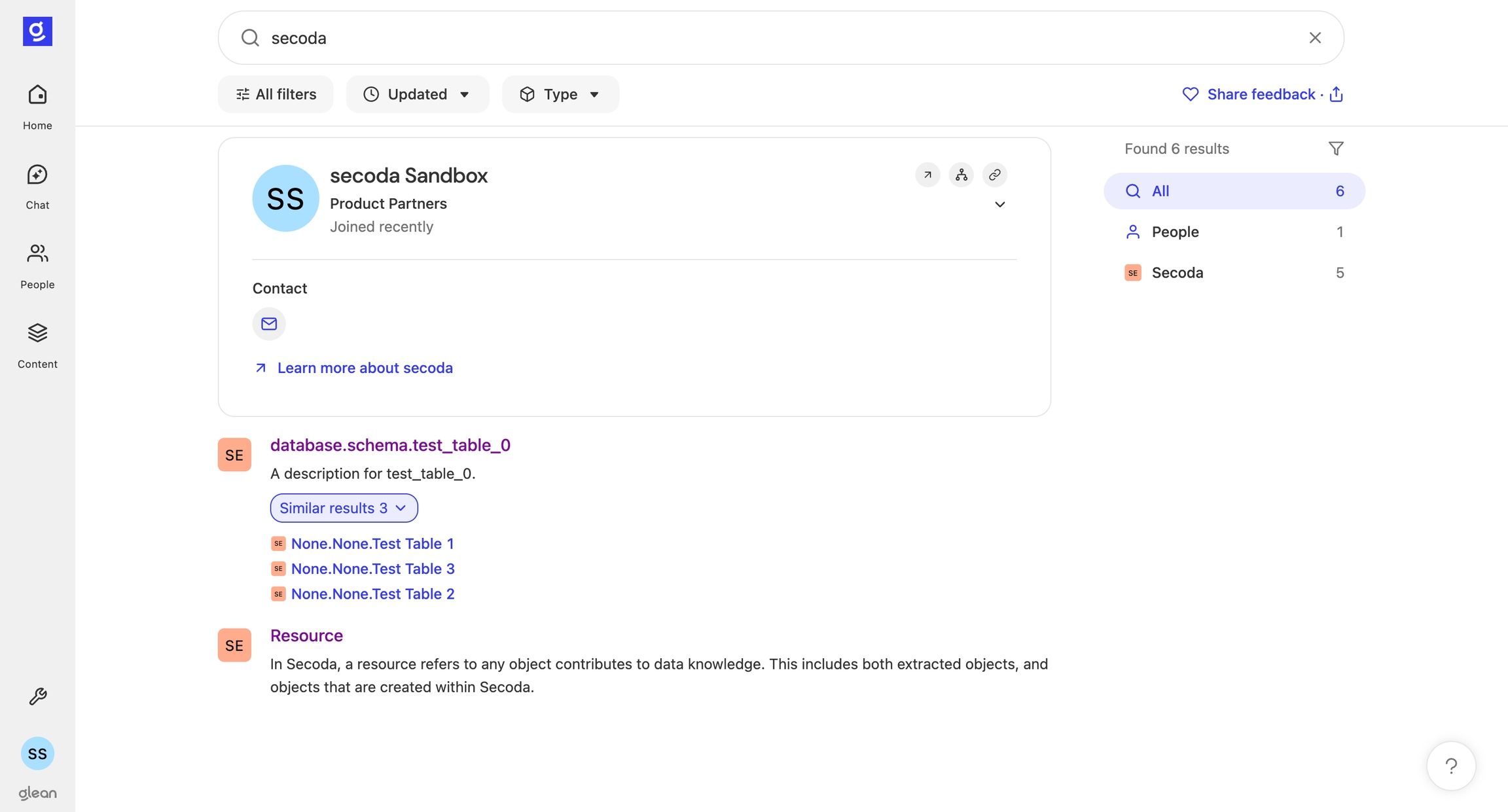
Important Notes
Although the pushes from Secoda usually take no more than a few minutes, Glean also takes time to index the entities which can take up to a few hours for large workspaces.
Make sure that the users are indexed into the database to enable searching within Glean. More details to do so can be found here.
Last updated
Was this helpful?